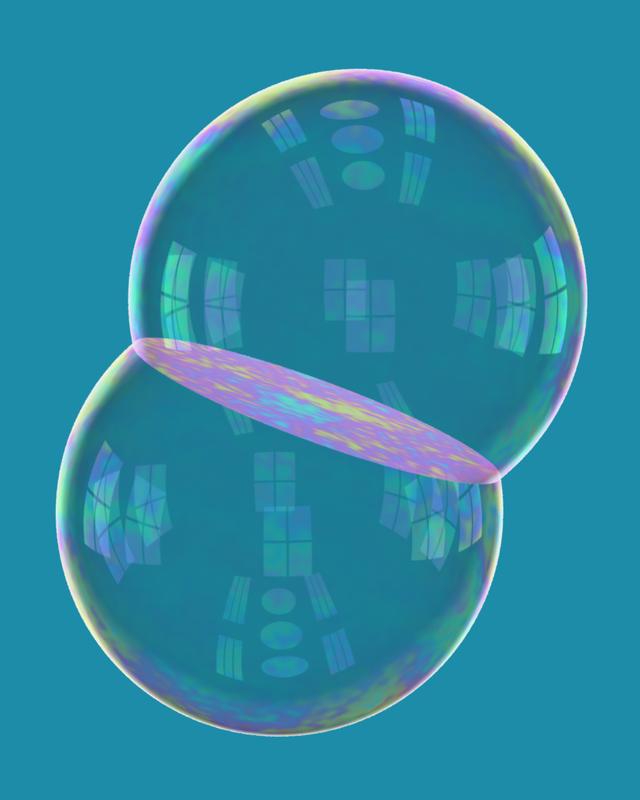
If you blow two soap bubbles stuck together, you will get the shape shown below. (Try it and see!)

This is the standard double bubble shape, consisting of three pieces of spheres meeting along a circle at 120 degree angles. The interface between the two enclosed regions bulges out of the region with smaller volume into the region of larger volume. For equal volumes, the interface is a flat disk.
To try to understand this mathematically, the double bubble conjecture, now a theorem, asserts that the standard double bubble is the least area way to enclose and separate two given volumes in R^3.
In the 1970's, Almgren proved that an area minimizer exists and has some regularity. In the 80's, B. White showed that any area minimizer is a surface of revolution about some line. Paper [2], written in 1993-94, basically rules out all competitors except for the following two topological types:


Nonstandard double bubbles. In the left example, the inner region is a dumbbell (topologically a ball), and the outer region is topologically a solid torus. On the right, one region is disconnected and consists of the inner component (topologically a ball) together with the outer component (topologically a solid torus).
Moreover, for equal volumes, we find that both regions are connected, so the second type is ruled out. Up to scaling, there is a two-parameter family of conceivable bubbles of the first type. In 1995, J. Hass and R. Schlafly used a rigorous computer search to show that the first type cannot minimize area for equal volumes, thus completing the proof of the double bubble conjecture for equal volumes in R^3, see [3].
Paper [12], with F. Morgan, M. Ritore, and A. Ros, announced in [11], shows without a computer that for any pair of volumes, competitors of either of these two types are unstable, i.e. they can be perturbed to decrease area while holding the volumes fixed, so they cannot be area minimizing. This completes the proof of the double bubble conjecture in R^3.
This was extended to R^4 by C. Heilmann, Y. Lai, B. Reichardt, and A. Spielmann, all undergraduates. The analogous statement in R^2 had been proved in 1990 by Foisy, Alfaro, Brock, Hodges, and Zimba, also undergraduates at the time.
There is a natural conjecture for the least enclosure of three given volumes in R^3, and more generally for up to n+1 volumes in R^n. However, it seems to me that the triple bubble problem in R^3 is hopelessly out of reach with present techniques and requires some major new ideas. The triple bubble problem in R^2, while less daunting, is also still open (although an easier version of this problem, where you require all regions to be connected, has been solved in [1]).
Update (2002): Wacharin Wichiramala has proved the triple bubble conjecture in R^2.
Another open problem, which might be doable somehow, is to prove that the standard double bubble is the only stable (i.e. locally area minimizing) enclosure of two connected regions in R^3. This would explain the physical fact that only standard double bubbles are observed in real life. (If you ever blow a double bubble that looks different, please send me a picture!)